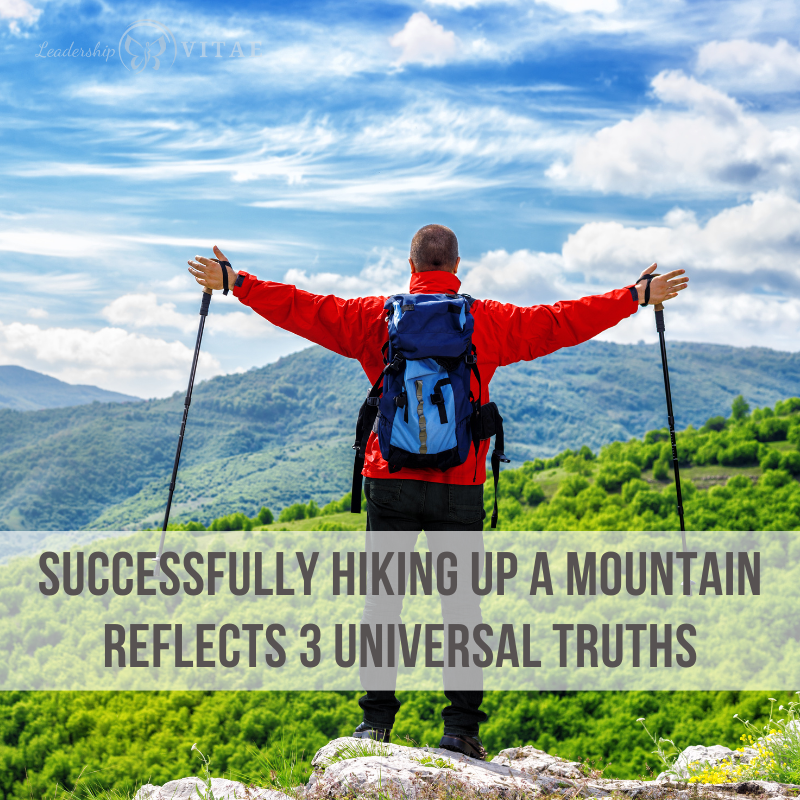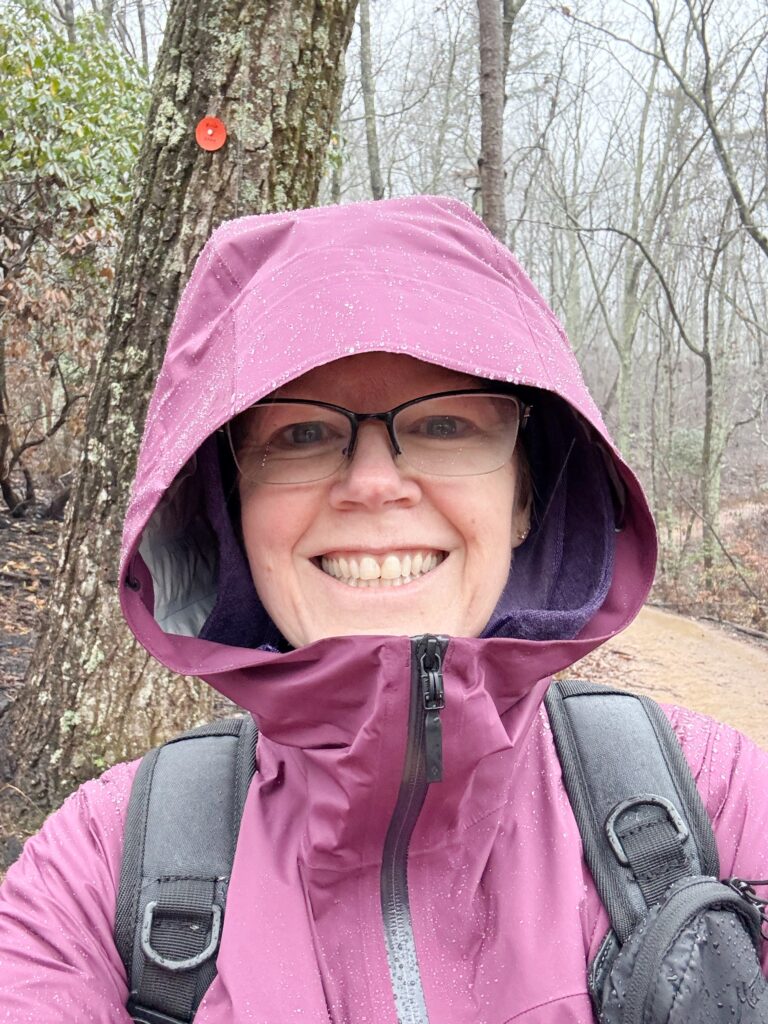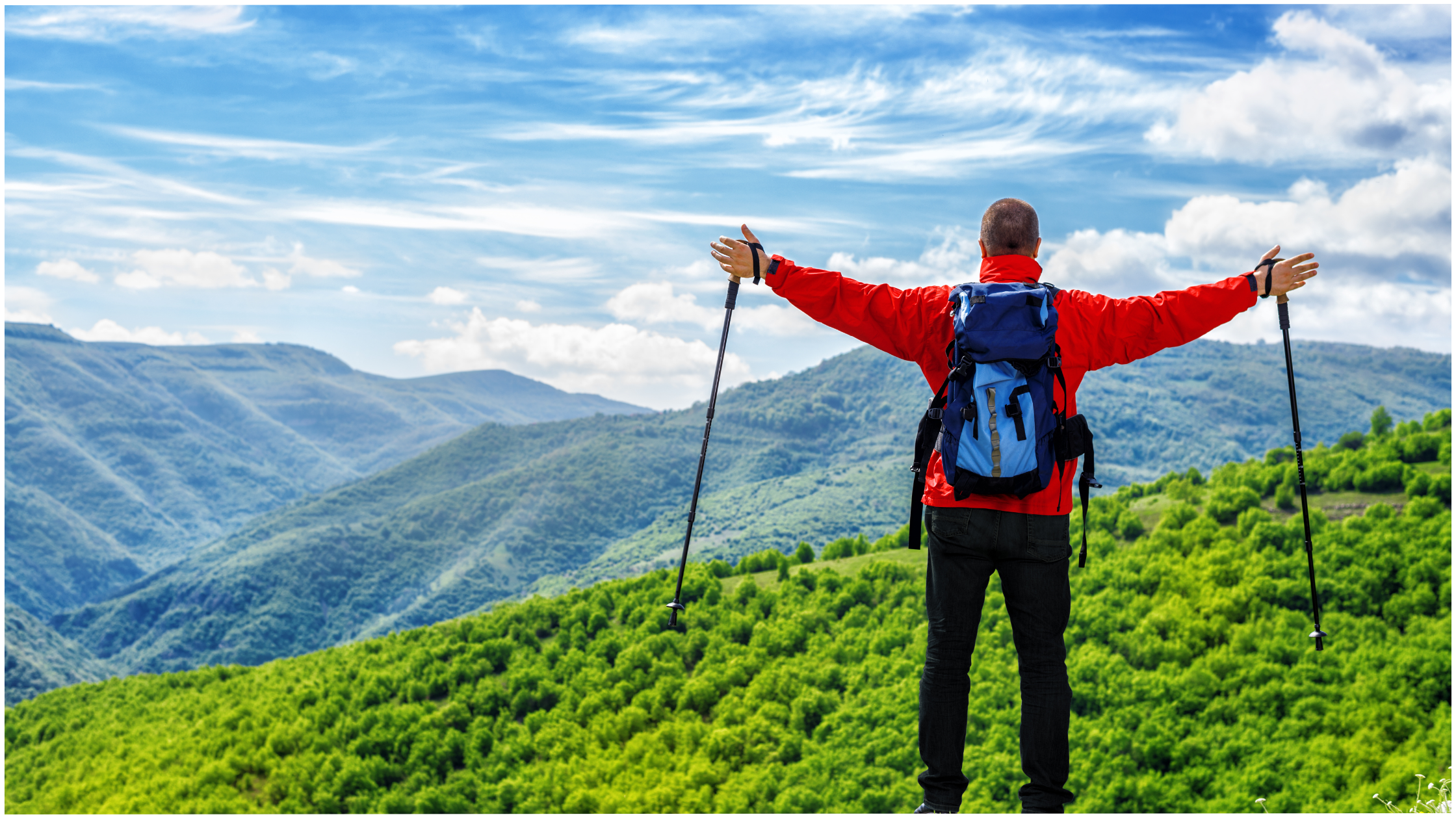
On my most recent hiking trip, I went up and down various hills and mountains for 6 days. It was winter in the South, so a mix of cold and rainy or sunny and warm, depending on the day.
I was coming back down after a moderately challenging summit. The number of people I came across could be counted on one hand until I got to the bottom. It was approaching lunchtime and it had warmed up a bit outside. The parking lot was now full and lots of people were heading out onto the trails.
I was so grateful that I got out early and was able to enjoy the peace I find when I have the mountain to myself. That got me thinking…as I often do once the strenuous part is over and the mind is open to new ideas.
Hiking is very much a reflection of life. There are a few truths I bring with me on the mountain that I try to practice the rest of the time. If I ever forget why, all I need is to get back outside to be reminded.
1. Pick your hard
There will always be challenges. Some of them, like trekking up a mountain, we can choose, but even that has levels of hard.
I almost exclusively hike at state parks, which means they are gated with open hours. I get the ease of parking and a sense of safety. However, the challenge is they can be quite popular. I try to go out first thing in the morning as soon as the gates open so I’m more likely to have the trails to myself.
I can summit before most people think about leaving the house. Pick my path without worrying about what other folks are doing. Navigate the harder side on the way up so I can take it easy on my knees on the way back.
If I pick the easy morning, my hard will be dealing with crowds and noise later. If I go up the easy side, I’m coming down the hard side risking injury.
There’s going to be hard in life. If we consistently choose the easy path, we’re signing up for hard later. Going after the hard first makes everything that comes after feel much easier.
2. Plan ahead
This one might seem obvious, but if common sense were common, I’d be out of work ™.
No matter where I hike, including relatively flat trail systems near my home, there’s some level of planning required.
We need gear, which means knowing what the weather is like. We need fuel and hydration, which means knowing where we’re going and how long we will be out. That means finding a map and choosing which trails fit our experience, time, and fitness levels.
As a woman hiking alone, there’s also safety to consider. I turn on location services for my friend and text her before and after the hike with target times to finish. Picking hiking spots that have ranger stations and researching them in advance.
I’m sure I’m forgetting something here, but something as seemingly simple as going for a hike can be anything but. Sure, I could go out and wing it. After living in NH for years and hearing every season about hikers who weren’t prepared for changing weather or got lost…nope. Not winging it.
We can be successful by accident, or we can do it on purpose. If it’s by accident, it’s rarely repeatable and opens us up to unnecessary risk.
3. Change the plan
Yes, we need to plan ahead. We also need to be willing to change the plan. I went to Crowder’s Mountain State Park, intending to summit two “peaks” (their words, not mine). On the first full hiking day, it was cold, but didn’t start spitting rain until I was almost back. The trails were dry and hauling myself up rocks felt comfortable.
Fast forward and the next two hikes were either in rain or dealing with the aftereffects. I planned to get to the top of King’s Mountain and was making my way up pinnacle trail.
Fortunately, I did my research and knew what to expect. There was nothing on the map that indicated what I’d find at the top. AllTrails has lots of great reviews (which is why I only go places after I’ve researched them) that included the summit.
Apparently, it can be treacherous on a good day. Though the views are supposedly stunning, I wouldn’t know. I turned around before the last push to the top – twice – because I wasn’t going to risk going up there when it was wet.
We should have goals and plans and be prepared. Give it our best shot and push ourselves because we are often more capable than we think. We should also read the environment and turn back when signs point to danger. There’s putting artificial limits on ourselves and there’s being smart. Always be smart.
These are the things I noticed when I considered life lessons I could take away from hiking. What would you add or change?









